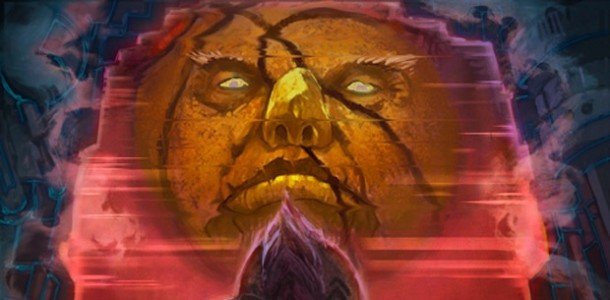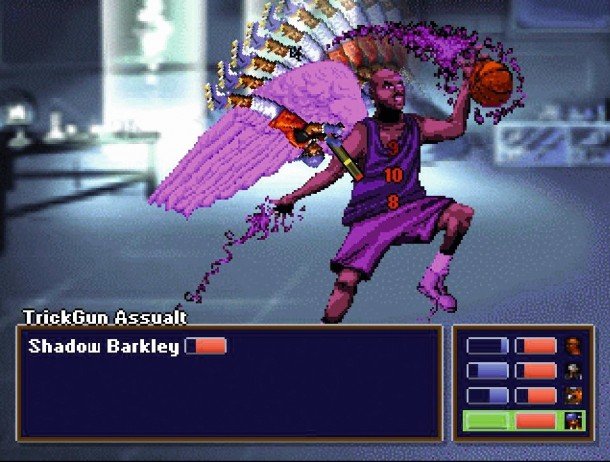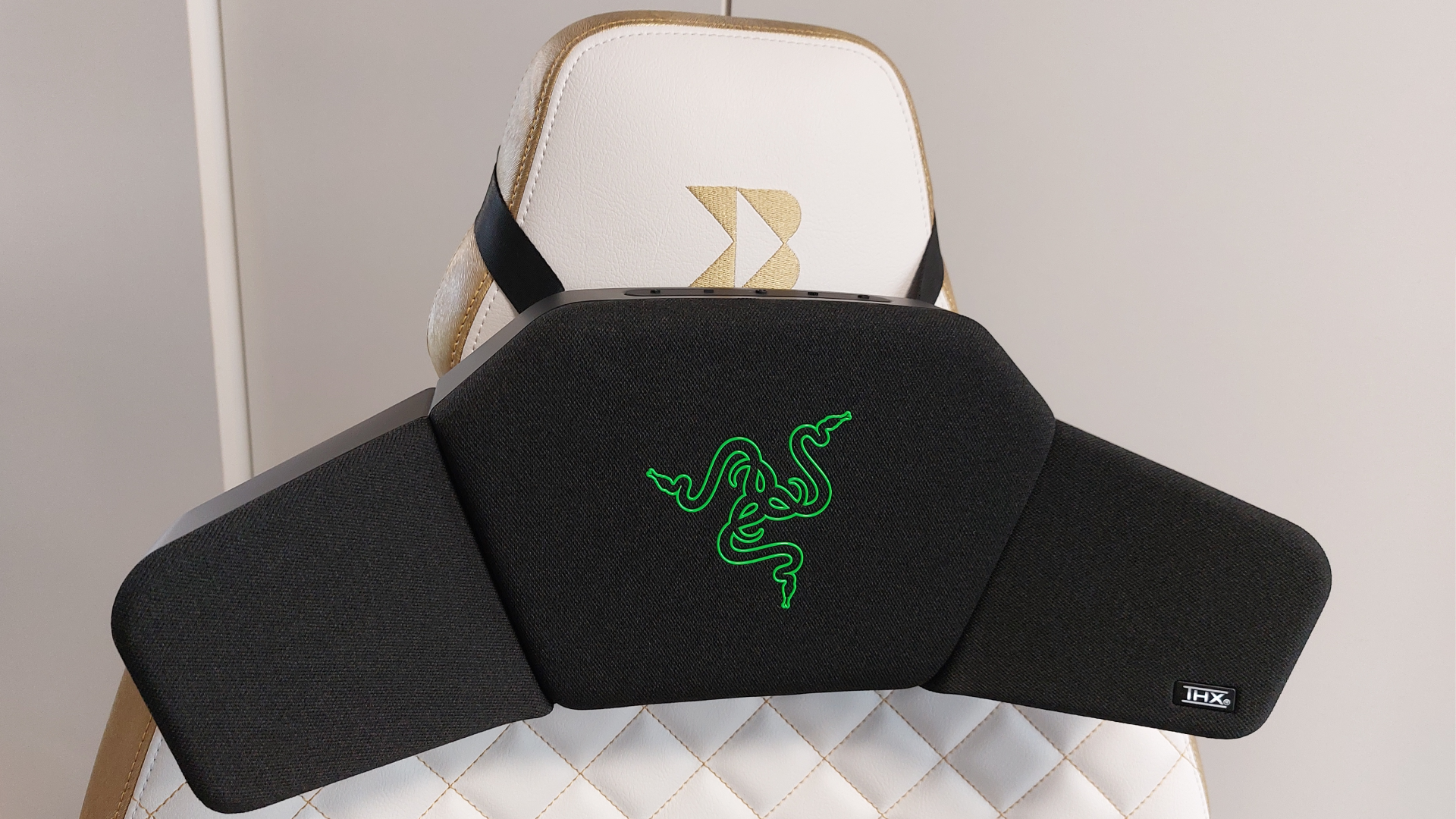Basketball, dwarves and Bill Cosby's ghost: Barkley 2 is the weirdest indie RPG sequel

This preview originally appeared in issue 249 of PC Gamer UK.
The year is 2013.
Charles Barkley is an analyst on the American sports show Inside the NBA. He's a big man, he speaks in a deep, resounding voice, and he is reportedly obsessed with cleaning.
Barkley used to be a basketball player.
The year is 2053.
Charles Barkley lives in Neo New York: a shattered city, ruined by 2041's Cyberpocalypse.
The Cyberpocalypse was Barkley's doing. He accidentally destroyed the world as we know it with a Chaos Dunk: a slam dunk so dunktacular that it killed everyone who witnessed it – everyone but Barkley's young son Hoopz.
Keep up to date with the most important stories and the best deals, as picked by the PC Gamer team.
Barkley used to be a basketball player.
Barkley Shut Up and Jam! was developed by Accolade and released in 1994 on the SNES and Mega Drive. It was a basketball game, and starred that year's most valuable NBA player: the titular Charles Barkley. A sequel was released the following year.
Barkley, Shut Up and Jam: Gaiden was released in 2008. Barkley Shut Up and Jam! was a game about basketball and so was Gaiden, but in a very different way. 1994's Barkley was an arcade sports sim, apeing the popular NBA Jam in mechanics. 2008's Gaiden was a top-down RPG that took its cues from obscure cult Japanese games. Where the original took place on small, squeaky courts, Gaiden took players into sugar mines, forgotten tombs, abandoned ball factories, Proto Neo New York, and dimensions devoted entirely to basketball. BSUJ let Barkley play with real life NBA stars. Gaiden had Barkley recruit a party of b-ballers in an age when b-ball was outlawed: a cyborg version of ex-player Vince Carter, known as Vinceborg; 'Ultimate Hellbane', later revealed to be the great grandson of current NBA baller LeBron James; Cyberdwarf, a dwarf with skin made entirely of basketballs; and Hoopz, whose youthful exuberance keeps Barkley sane.
And there's Barkley himself. Through pixellated sprite eyes and world-weary dialogue he somehow conveys all of the real Barkley's competitive aggression and arrogance, topping it off with both pathos – his relationship with Hoopz is strained – and joyful, inane, absolute insanity.
Why Barkley? Why an ageing basketball star for a ludicrous JRPG?

“I just saw that name,” Eric Shumaker says. “I saw Barkley Shut Up and Jam! and thought it would be really funny if we called it Barkley Shut Up and Jam: Gaiden. And that was really the only reason behind it. It's just this ridiculous game and we were going to try and make the game more ridiculous.”
Eric Shumaker co-developed Barkley, Shut Up and Jam: Gaiden with his friend Brian Raum and a handful of artists and programmers, founding Tales of Game's Studios. The erroneous apostrophe is entirely intentional.
"A big part of Barkley was gently making fun of the RPG Maker community."
Eric and Brian met on the RPG Maker forums. Both had experience with the RPG Maker software, designed to enable smaller developers to make SNES-style RPGs without a complete knowledge of programming or a big budget. But Eric describes himself and Brian as 'idea guys', people who'd sit back and watch as this unique community of would-be game makers, otakus and RPG purists interacted.
Eventually the duo decided to get their hands dirty. The forums became a fertile breeding ground for Gaiden's strain of abject inanity.
“A big part of Barkley was gently making fun of the RPG Maker community,” Eric explains. “At the time there were a lot of games made with RPG Maker that took themselves very seriously. They had this self-important attitude, but at the same time they were made completely out of graphics stolen from famous SNES games like Chrono Trigger. It was a bizarre juxtaposition that we thought was really funny. We did the same thing: our game is clearly not serious, but we're taking it very seriously.”

Gaiden's save points are the best example of this philosophy. They're antennae, dotted around the levels, which enable players to record their progress. But before they can save, they have to sit through pages of interminable dialogue about the unquestionable superiority of Japanese RPGs over all other games. SNES JRPGs like Secret of Mana are touted as the most important interactive works of all time; Western titles like Oblivion are openly mocked. The save antennae also play host to one of the game's most enduring jokes: videogames aren't videogames in Barkley's future – they're vidcons, the kind of contraction that it's easy to see earnest forum types debating into the ground.
"RPG Maker doesn't really allow for mechanically good games. We just tried to make it funny."
Eric, recognising a kindred spirit in his view of the RPG Maker community, asked Brian to help him write dialogue trees for the gestating Gaiden. The two would talk a lot, but didn't meet in person until after the demo was completed. It was made, inevitably, in RPG Maker. Yet the software that had given them the grounding for Gaiden, as well as the means to make it, had its problems.
“RPG Maker doesn't really allow for mechanically good games,” Eric admits. “We just tried to make a game that was funny. Jesse Ceranowicz, our programmer, was able to port it to Game Maker. That's when we got ideas for making it actually good.”
Game Maker enabled Tales of Game's to improve their work, particularly the combat. Gaiden's fights are standard JRPG fare: one party stands on the left of the screen, the other on the right, and they take turns attacking, and using items and spells on each other. But this being Barkley, the fighting system has a name: the B.A.B.B.Y. system – named presumably after folkloric internet question 'how is babby formed?' It also has a weapon set that includes 'zaubers' (swords named after the German word for magic), basketballs made from pure destructive energy, and gun's. Apostrophe, again, entirely intentional.

